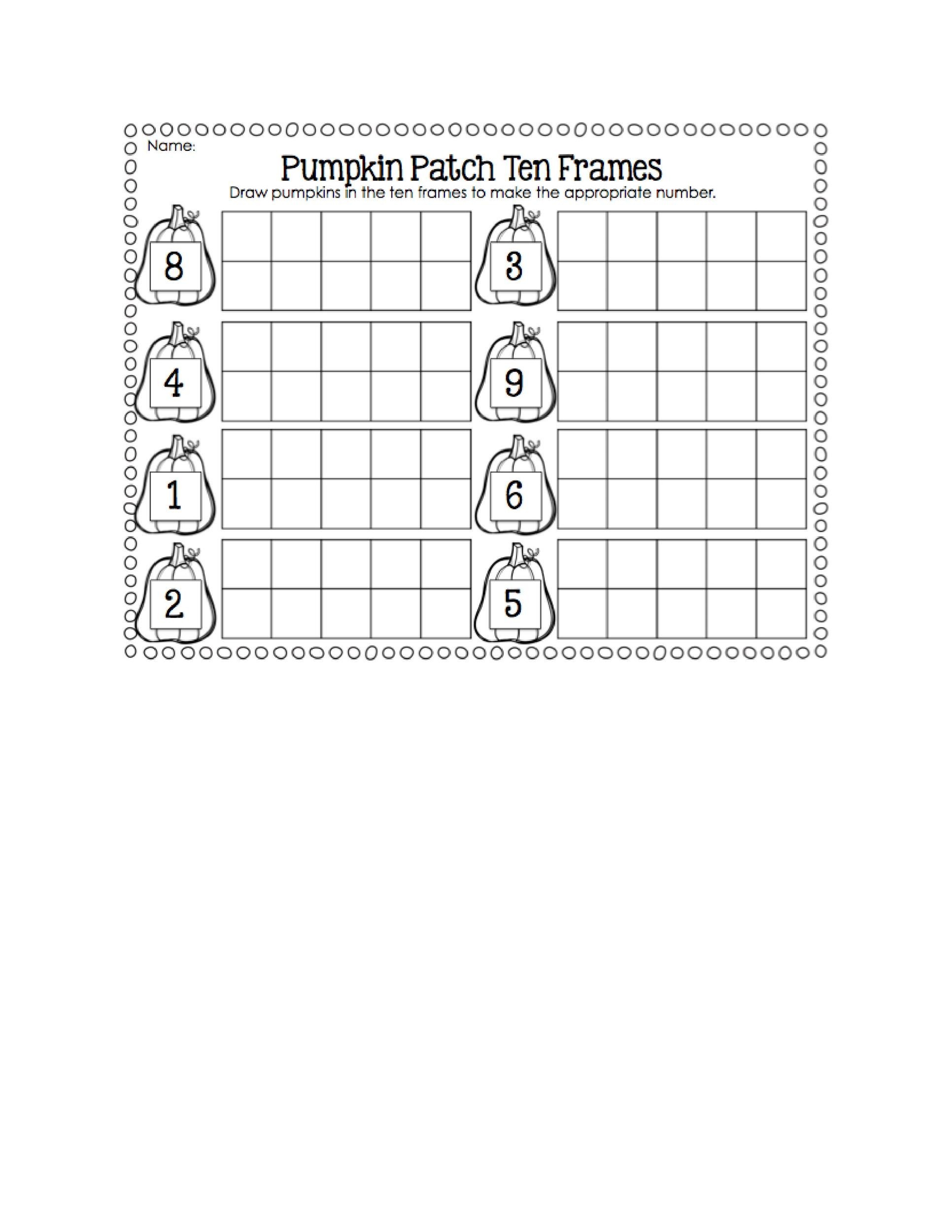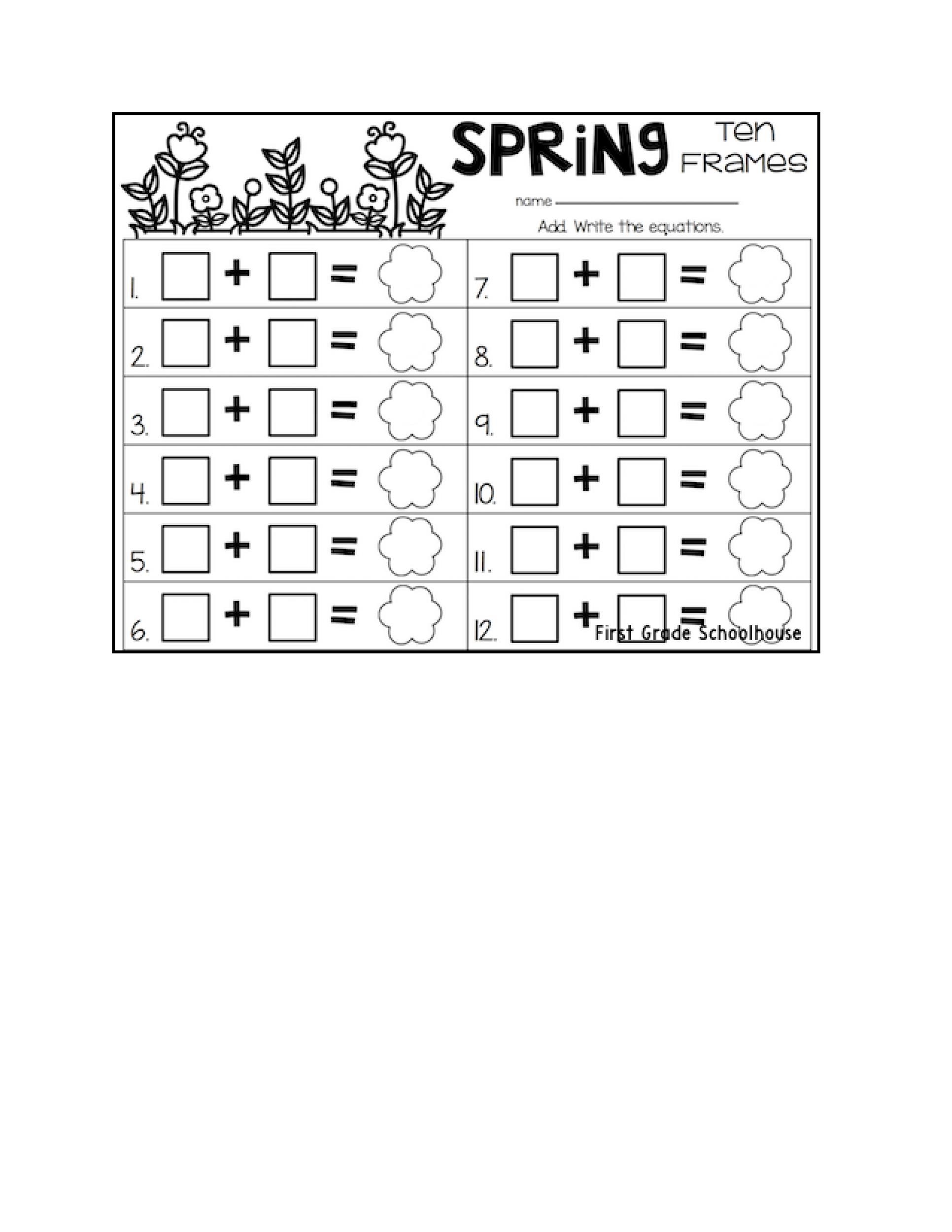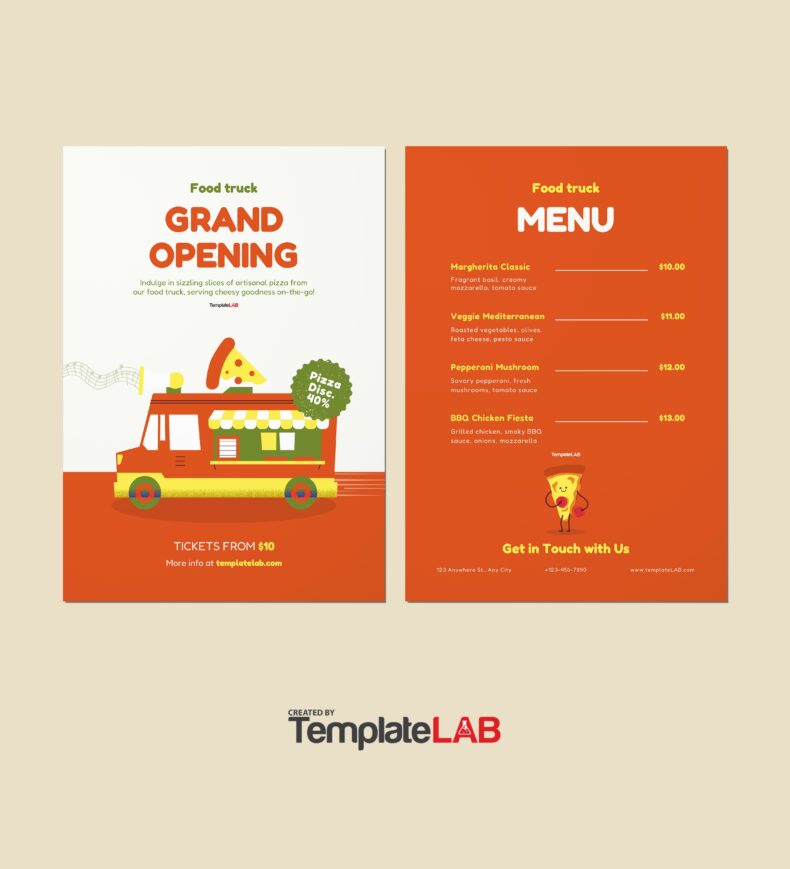Ten frame templates may seem simple but they’re actually very useful. This kind of template can be used to help a child learn math more efficiently. The most basic purpose of such template is to relate number symbols to concrete quantities. These templates help children understand that numbers can actually consist of smaller combinations of items or objects. You can either make your own template or download a printable ten frame template from our site. There are a lot of options available.
Table of Contents
Printing out your own template will allow you to work with your child at home. Working with the template is a simple way to provide your child with different experiences which will strengthen his/her sense of numbers. Your child will also gain a better understanding of place values using this template.
Such templates can be used as a powerful tool to build and develop your child’s number sense. It will help your child obtain a fluency in mental math and better comprehend how to employ math strategies such as composing and decomposing numbers to be able to accomplish operations over places. Counting from tens, hundreds and thousands will be made much easier.
Blank Ten Frame Templates
First-grade students become interested in learning number facts and developing their number sense by pairing the templates with manipulatives, images and other such supplemental materials. This is especially useful for children who find math concepts challenging or children who have actual learning disabilities. They need more time to develop their number sense and understand mathematical concepts. And often you will need to pair the templates with supplemental materials such as manipulatives. To better understand these templates, let’s take a look at how they were developed.
How was the Ten Frame Template Developed?
Moving around objects such as counters in a variety of ways on the ten frame template encourages the students to form images in their mind of the number symbols which are presented to them. The ten frame makes use of the concept of benchmarking numbers 5 and 10. This helps the students create visual images in their mind for each of the numbers.
When making use of the template, students will be able to see concretely the relationship of the symbol and the quantity clearly. For instance, the student will be able to see that 7 is two more than 5 and 3 less than ten. Or that 6 is “5 and 1 more” or 4 away from 10. Try visualizing these objects on the template and you will “see” the objects clearly.
As soon as the students acquire the ability to visualize all the numbers from 1 through 10, they will start to develop strategies in their mind for manipulating the said numbers. All these strategies are within the context of the relationship of the number to 10.
This is the basic concept behind the ten-frame. A researcher named John Van de Walle recommends that young students, particularly those who are in kindergarten and those who are in the early parts of first grade explore number concepts using a five-frame first. They can use this template for a week or two before moving onto the frame with ten squares. Van de Walle says that when you are to introduce the ten frame, follow these guidelines:
- Use objects like counters to fill in the top row first.
- When filling in the top row, start from the left, the same way as how you read a text.
- As soon as you’ve filled up the top row, the objects or counters can be placed on the bottom row.
- When filling in the bottom row, also make sure to start from the left.
In doing this, you will create a “standard way” to demonstrate numbers on the template. Go online and find a printable ten frame template so you can start working with your child to help him/her learn numbers better. Either that or make your own as it’s really easy. Now let’s move on to the mathematical application of this template.
Ten Frame Worksheets
Mathematical Application of Ten Frame Templates
The ten frame is a very simple visual tool which allows children to “see” numbers more concretely. It’s important for children and young learners to understand that numbers are made up of tens and ones. This is a foundational concept which, when understood completely, will allow your child to transition easily to working with bigger numbers. A strong foundation of the first ten numbers is a primary requirement for the understanding of place values and calculations made in the mind.
These frames are simple rectangular frames with two by five squares. Objects such as counters are placed on the squares to illustrate the numbers from 1 through 10. They are extremely useful tools for building a good number sense from 1-10. Varying the arrangement of the counters in the frames will help your child visualize the numbers in his/her mind. Here are some of the mathematical applications of such templates:
- When you keep practicing the number concepts with these frames, then your child will be able to automatically think of the numbers 1 through 10 in terms of their relationship to the number 10. Your child will be able to develop a good foundation of knowledge for more complex concepts such as addition and subtraction for numbers 1-10. This is a very important part of a mental calculation.
- Ten-frames help build your child’s number sense. Making use of fun objects as counters will encourage your little learner to keep on building and developing his/her number sense.
- These frames allow your child to see numbers as sums including five. This is a good way to help your child practice addition from 1-10.
- These frames also allow your child to see the numbers in the context of ten. This means that your child will be able to see how many you need to add to a number to get to ten or how far away a number is to ten.
- Making ten frame cards is easy, all you need is a template to print out. So either make one yourself or find a printable one, print it out then start having fun learning math with your child!










































